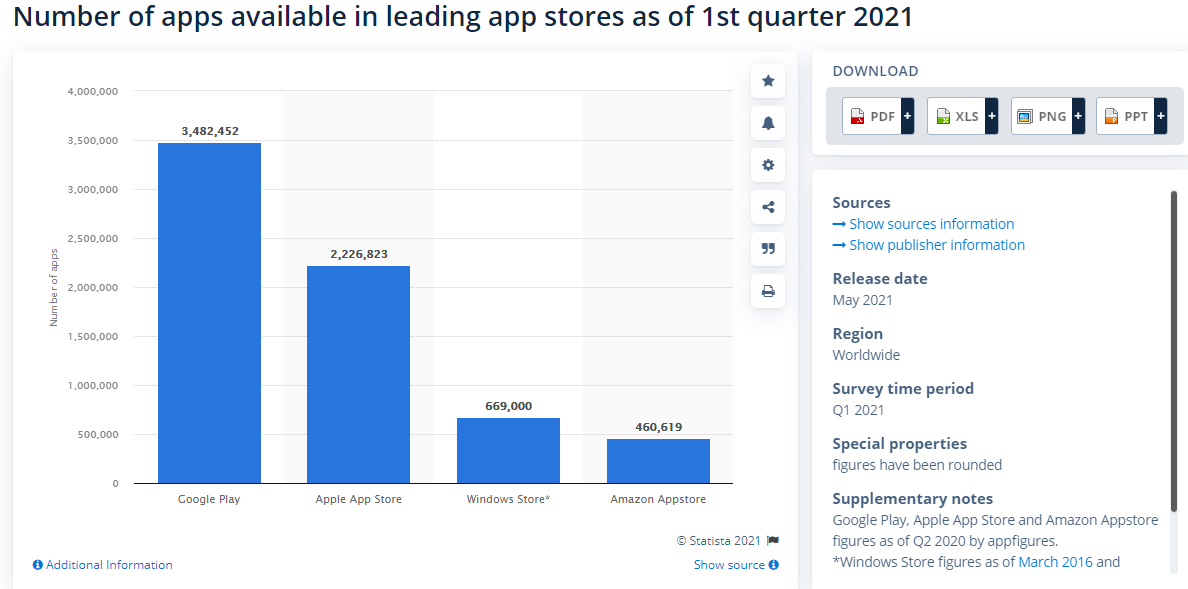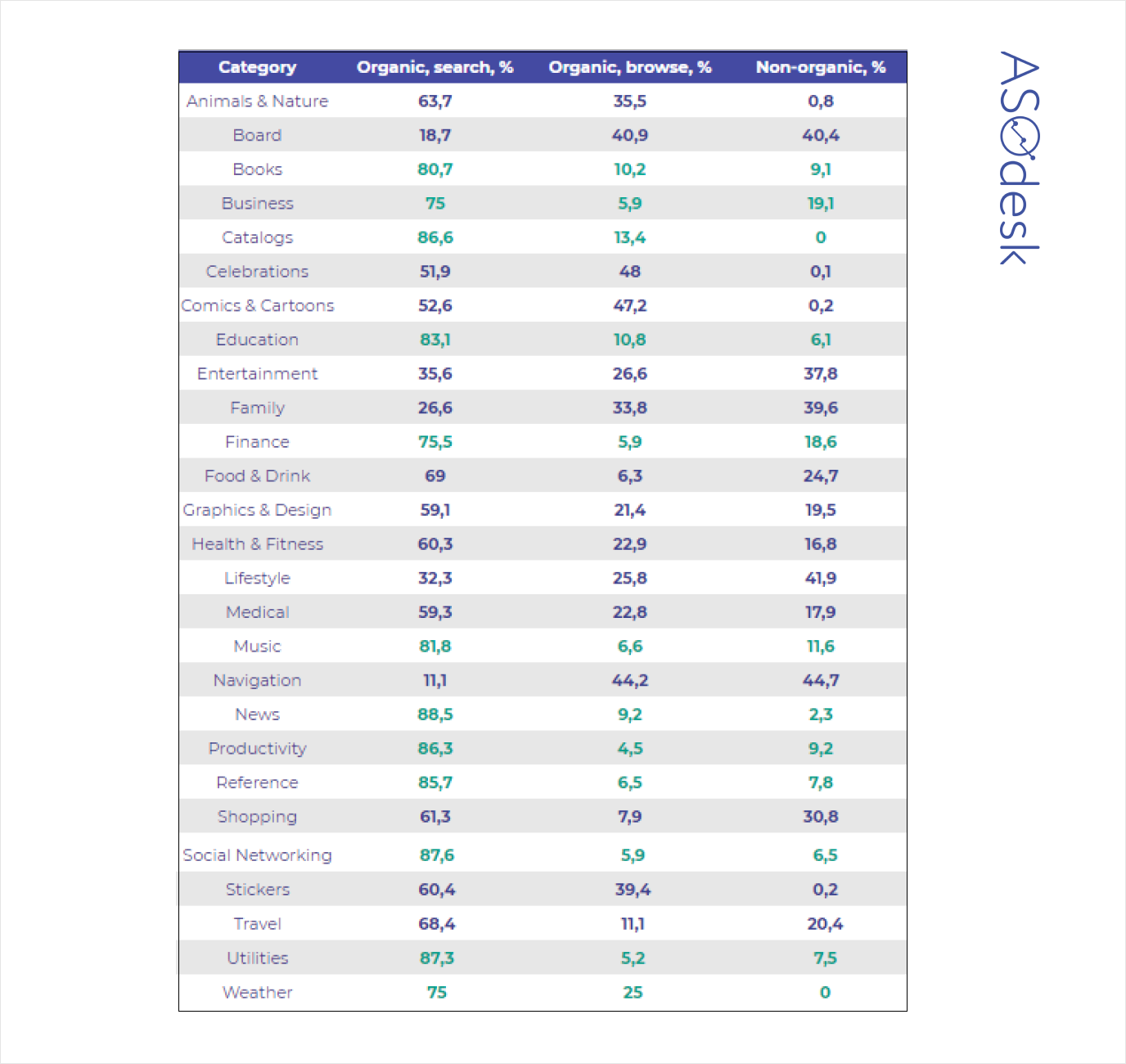Here is an interesting fact: according to Statista, there were almost 3.5 million applications registered in Google Play as of Q1 2021. The second place was firmly held by the Apple App Store with above 2.2 million applications – almost four times more than the next closest online distribution platform, Windows Store.

Even more news worthy of interest came recently from Russia: it appears that its anti-monopoly regulators gave a warning to Apple at the end of August 2021 with which the company didn’t comply. The Federal Antimonopoly Service opened a case at the end of October for the reason that Apple had arguably prohibited application developers from informing their clients on a possibility to purchase apps somewhere else but on its App Store.
Whether the company has abused its market dominance in Russia or not, doesn’t really matter because App Store and Google Play remain two most popular distribution platforms. That explains high demand for ASO (App Store Optimization) tools to make applications more visible there. Similarly to search engine optimization, ASO services work both with internal and external optimization, including keywords, backlinks, and semantic core.
Reasons to Attract Organic Traffic with ASO Tools
ASOdesk provides a brief overview of how to determine the need to attract organic traffic to applications. Or does it really have to be organic? According to its logic, traffic falls into two broad categories: organic (generally visitors coming from unpaid resources) and inorganic. In turn, organic traffic is composed out of:
- Search traffic – this one is generated by users of distribution platforms who search for applications upon certain queries, and
- Featured (or browse) traffic which is received through collections of applications most frequently seen by users browsing online stores.
Inorganic traffic comes from either inbuilt ads in other applications or from paid backlinks, thus having high importance for backlink building as well. It appears that there is a certain correlation between the app category type and the type of traffic it should predominantly look at.

True – determination of the traffic type to focus your strategies on greatly depends on which category you’re in. In business, for example, what matters most is organic search traffic (75%), followed by non-organic. Music, News, and Social Networking are examples of categories “skewed” towards organic search, with only minor influence of two other traffic types.
Whenever your application falls into the inorganic “paid promotion” category (Entertainment, Navigation, Lifestyle, and some others), that might be the first marker to consider paid links for ASO and SEO as a tool to make visitors purchase your applications ahead of your competitors’.

The Essence of ASO
App Store Optimization is a continuous process with the goal of increasing the number of downloads of your application – just like working to increase the conversion rate of your website. ASO is a “trial and error” approach to building the semantic core with sometimes numerous iterations.
Semantic Core
Business of Apps distinguishes several steps of an ASO strategy, the very first of which is developing a semantic core, followed by preparation of metadata. Semantic core development arguably takes the largest chunk of all the time spent on ASO.
For those not quite familiar with the notion – put differently, it is a set of high frequency keywords and phrases used to target the audience. That’s what matters most when it comes to search traffic, so it has to be of utmost importance for applications attributed in the above table to such categories as Finance, Catalogs, Books, Music etc.
Calling semantic core simply “keywords” a bit undervalues its true meaning because what matters most is the volume of traffic associated with each of the chosen keywords or phrases. The best strategy is to choose the ones to bring more successful downloads. How many resourceful keywords may not be in use simply because of unawareness of ASO specialists – just like an underwater part of a floating iceberg! Only time will tell whether the current choice is optimal or not, and whether corrections are needed – that’s why App Store Optimization is a path of errors and corrections.
There are universal recommendations on how to approach development of a semantic core:
- It starts with gathering statistics on keywords currently used for searching similar products (applications in our case), if you’re new to the platform. There are various instruments for that, such as Google Analytics or Google Search Console. If you’re not new and want to modify your current ASO strategy, the same analysis is performed for the keywords by which your application is found in search results.
- All keywords identified for your application and your competitors’ similar apps are then put to a single list for easier processing: meaningful keywords are eliminated, synonyms are added.
- What remains is then categorized and prioritized. That process may take time, which is why it is better to use professional instruments of search engine optimization, both free and paid. Semrush and Ahrefs are known for their SaaS tools to make SEO specialists’ life easier, although in many cases, Google Analytics would suffice.
- Employment of advanced tools for semantic core building is especially advised in complicated situations, for example, whenever you’re unfamiliar with foreign language keywords used by participants of the market being targeted. This is especially true for ASO because applications are generally developed for a vast audience, not necessarily consisting of all English-speakers. There are many tools with inbuilt translation features that might help here.
Metadata
Working with metadata is another crucial segment of preparatory work mostly important for organic browse traffic, thus receiving most attention from developers of applications in Celebrations, Comics & Cartoons, Navigation, and Board categories mentioned in the table. It is logically connected with the first stage of semantic core building because chosen keywords affect the data put in the App Store or Google Play fields for the product’s description.
Moreover, if professional instruments were applied on the previous stage, functionality of many of them is enough to make working with metadata an easy job. There is only limited space in fields provided for description on electronic platforms, so one has to count the number of words and symbols. It’s much easier with automation, right?
On the other hand, there is always a place for creative work unattainable even for an AI-operated SEO tool. Because the number of words is limited, you have to make the most out of available space to differentiate your product. If your company is a famous brand, one word would apparently suffice. In most other instances, it is likely that the application needs keywords in addition to its title name to make more users download and install it.
Backlinks and ASO
Source of non-organic traffic should not be ignored, although that part of ASO goes separately. It’s like external SEO as opposed to onsite search engine optimization: two aspects of the same job which, although different, naturally complement each other.
Far not any external backlink is seen as a source of non-organic traffic which, according to the same table we’ve been referring to the whole time, mostly interests developers of applications in Lifestyle, Entertainment, and Navigation categories. However, paid links for ASO and SEO are a classical example of it, along with banner ads, pop-ups, and similar traffic sources.
Being paid implies money investments, so it’s worthy to study Google search rankings of the external traffic sources to be used for backlink building and, of course, composition of their visitors.
App Store Optimization: Things to Remember
The reality is that even placement of developed applications on electronic platforms requires optimization efforts similar to promoting your website on the Internet. Having much similarity with “normal” search engine optimization (and even many interacting activities, such as backlink building to increase awareness of your application on external traffic sources), ASO has certain specificity.
Approximately two thirds of it is what is known as semantic core building, the vital part of choosing keywords for users’ searching. It is then “polished” with metadata – a specificity of working with online platforms. Also, it is important to take into account different product categories because that could determine which traffic type matters more.